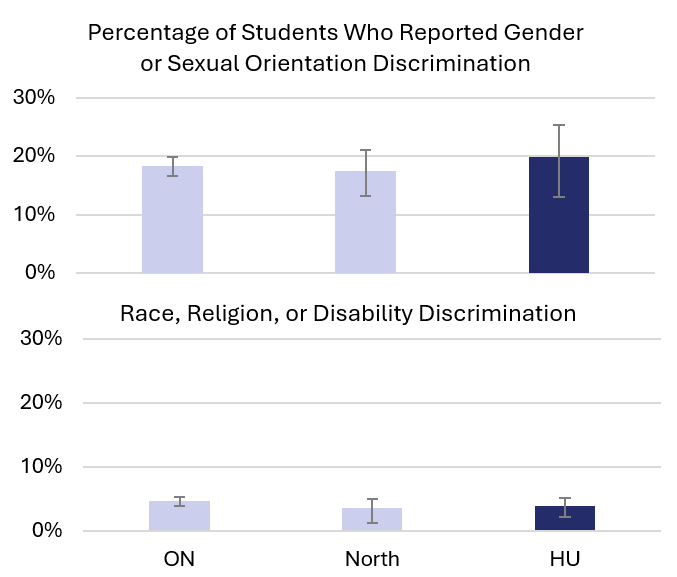Ontario Student Drug Use and Health Survey
In the 2022/2023 school year, the Health Unit was involved in an oversample of the Ontario Student Drug Use and Health Survey (OSDUHS) conducted by the Centre for Addiction and Mental Health (CAMH). This oversample included fourteen elementary schools (361 students across grades 7 and 8) and six secondary schools (374 students in grades 9-12) in the Health Unit district. The sample consisted of 48% females and 52% males with the highest proportions of students in grade 12 and aged 16–17-years-old (Figures 1 & 2). What follows is an insight into self reported mental health, physical health, substance use, and health behaviours among students.
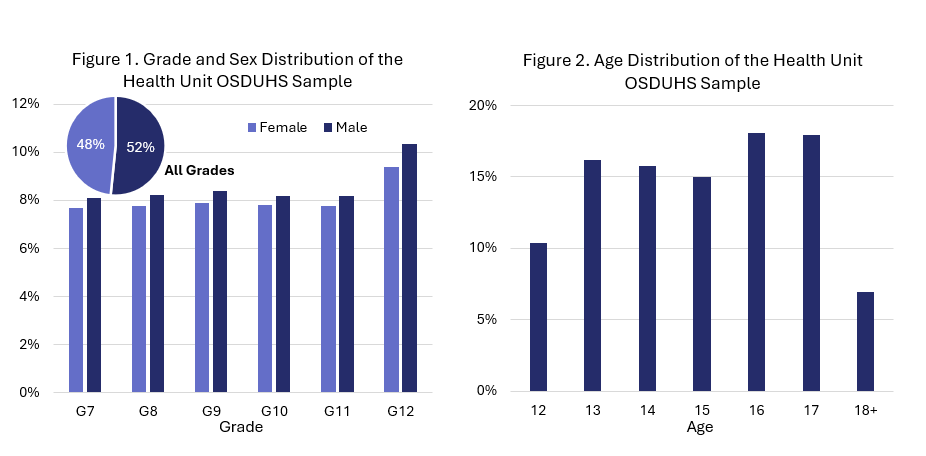
Note: Data from the 2023 Ontario Student Drug Use and Health Survey (OSDUHS) were provided by The Centre for Addiction and Mental Health (CAMH) and the Institute for Social Research (ISR), York University. The 2023 cycle of the survey was completed under the direction of the CAMH OSDUHS Survey Group: Dr. Hayley Hamilton and Angela Boak. Neither CAMH nor the ISR are responsible for the analyses and interpretations presented here.
To request access to the 2014-2015 OSDUHS reports, please send us an email.
| Youth Mental Health and Well-being |
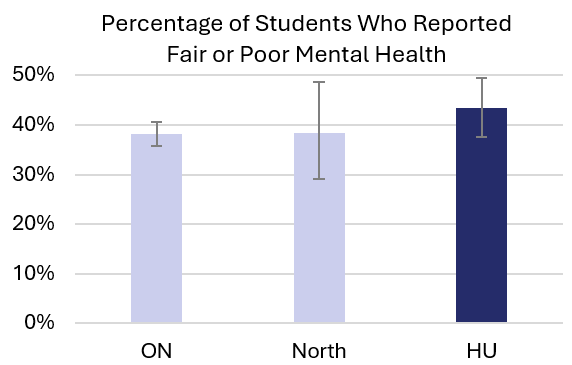
Figure 1. A graph comparing the percentage of students in the North Bay Parry Sound District Health Unit region (HU), Northern Ontario (North) and all of Ontario (ON) who reported their mental health as fair or poor.
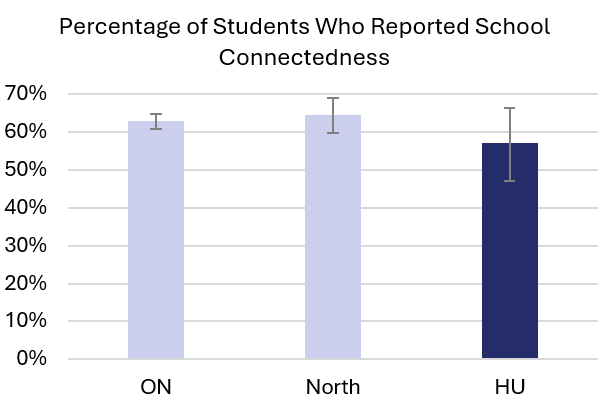
Figure 2. A graph comparing the percentage of students in the North Bay Parry Sound District Health Unit region (HU), Northern Ontario (North) and all of Ontario (ON) who reported feeling connected to their school and peers (responded somewhat agree or strongly agree to feeling safe in their school, close to people at the school and feeling like they are a part of the school).
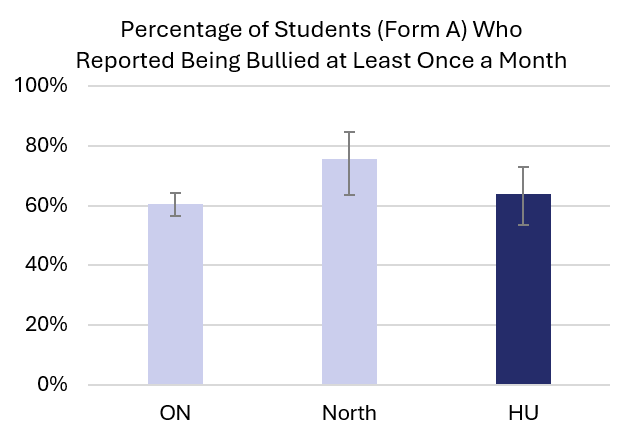 Figure 3. A graph comparing the percentage of students who completed form A in the North Bay Parry Sound District Health Unit region (HU), Northern Ontario (North) and all of Ontario (ON) who reported being bullied at least once a month or more since the beginning of the school year.
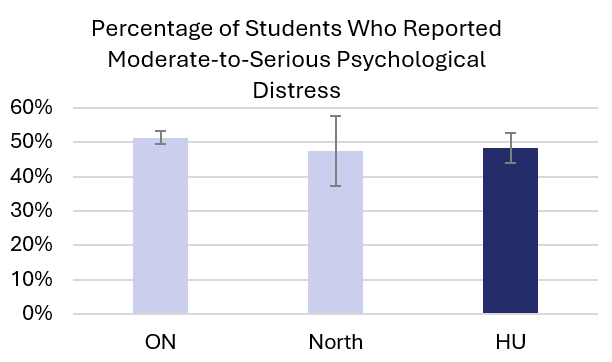 Figure 5. A graph comparing the percentage of students in the North Bay Parry Sound District Health Unit region (HU), Northern Ontario (North) and all of Ontario (ON) who reported feeling moderate-to-serious psychological distress in the last four weeks by scoring 8+ on the Kessler 6-item Psychological Distress Scale. 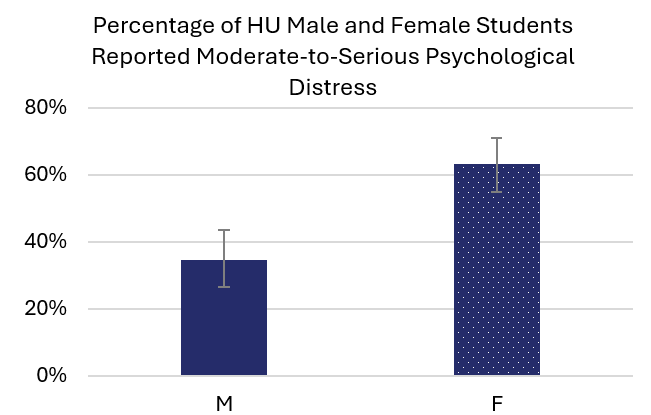 Figure 6. A graph comparing a subset of male and female students from the Health Unit region who scored 8 or more on the Kessler 6-item Psychological Distress Scale which indicates moderate-to-serious psychological distress. |
|
Youth Health Behaviours and Physical Health |
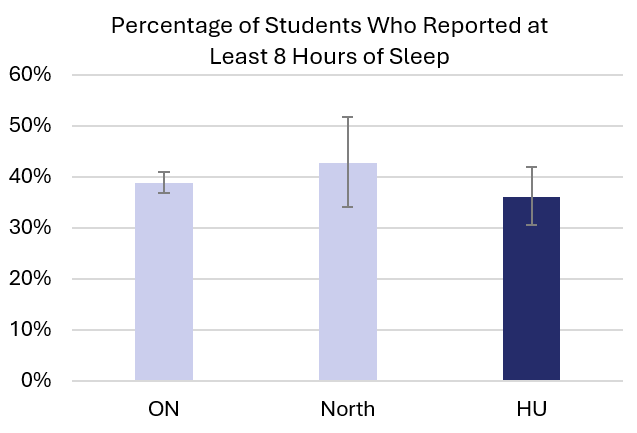 Figure 1. A graph comparing the percentage of students in the North Bay Parry Sound District Health Unit region (HU), Northern Ontario (North) and all of Ontario (ON) who reported sleeping at least eight hours or more on an average school night. Figure 1. A graph comparing the percentage of students in the North Bay Parry Sound District Health Unit region (HU), Northern Ontario (North) and all of Ontario (ON) who reported sleeping at least eight hours or more on an average school night.
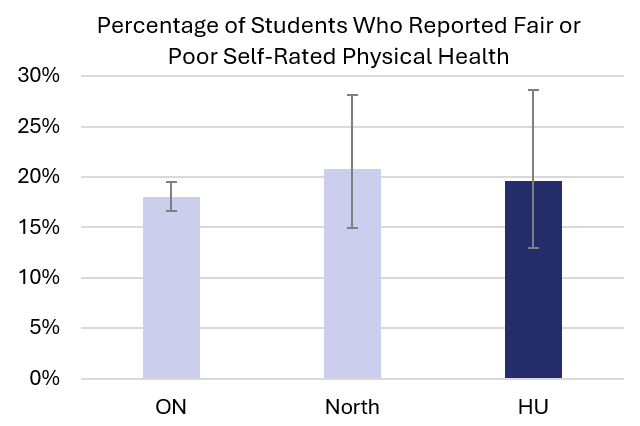
Figure 2. A graph comparing the percentage of students in the North Bay Parry Sound District Health Unit region (HU), Northern Ontario (North) and all of Ontario (ON) who reported fair or poor self-rated physical health.
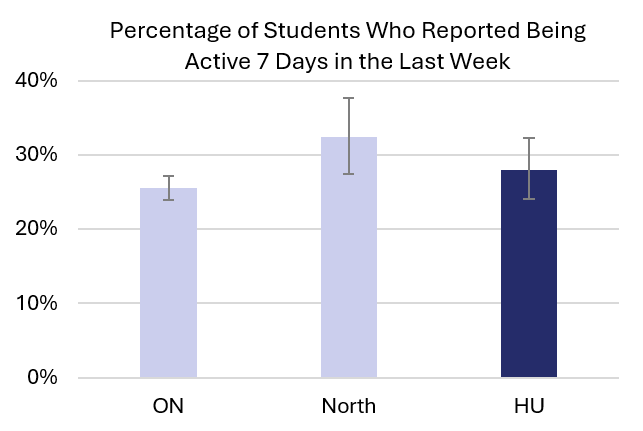
Figure 3. A graph comparing the percentage of students in the North Bay Parry Sound District Health Unit region (HU), Northern Ontario (North), and all of Ontario (ON) who reported at least 60 minutes of physical activity each day in the last week. 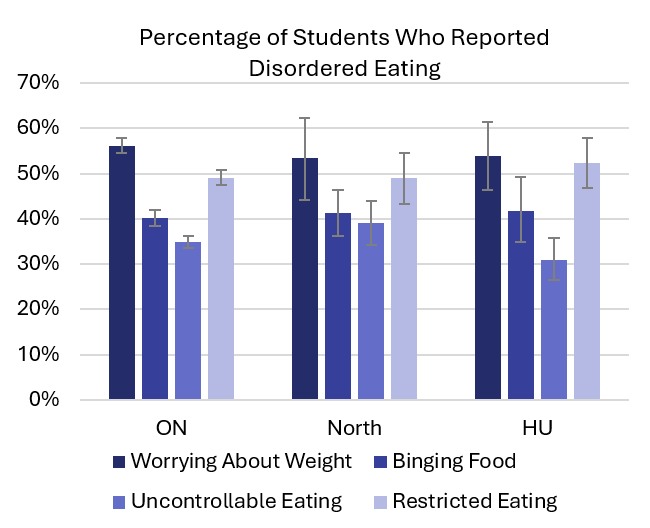
Figure 4. A graph comparing the percentage of students in the North Bay Parry Sound District Health Unit region (HU), Northern Ontario (North), and all of Ontario (ON) who reported disordered eating at least once or more over the last four weeks.
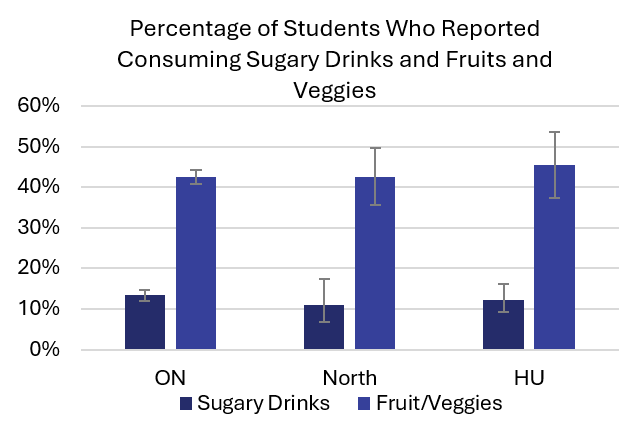
Figure 5. A graph comparing the percentage of students in the North Bay Parry Sound District Health Unit region (HU), Northern Ontario (North), and all of Ontario (ON) who reported consuming fruits and vegetables at least three times on an average day and sugary drinks once or more each day for the last seven days.
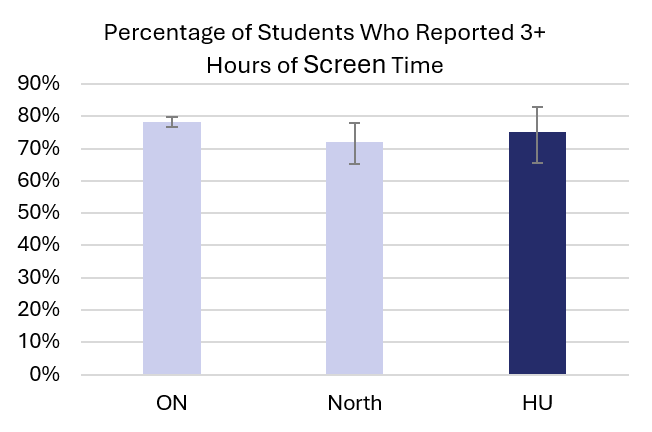 Figure 6. A graph comparing the percentage of students in the North Bay Parry Sound District Health Unit region (HU), Northern Ontario (North), and all of Ontario (ON) who reported three or more hours of screen time per day on average in the last seven days. |
|
Youth Substance Use |
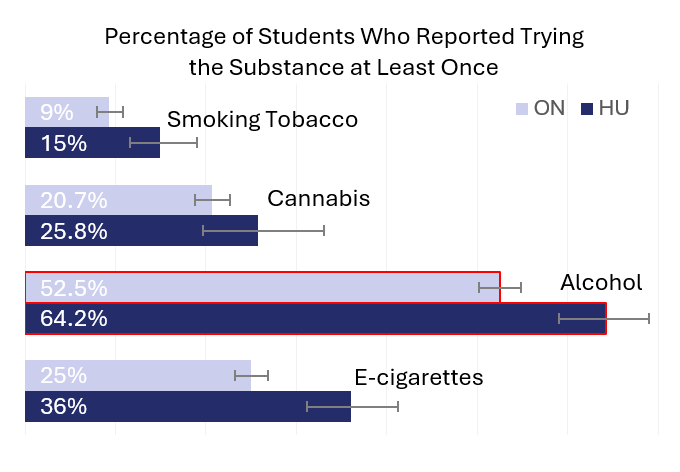
Figure 1. A graph comparing the percentage of students from the North Bay Parry Sound District Health Unit region (HU), and Ontario (ON) who reported trying tobacco, cannabis, alcohol, and e-cigarettes at least once in their lifetime.
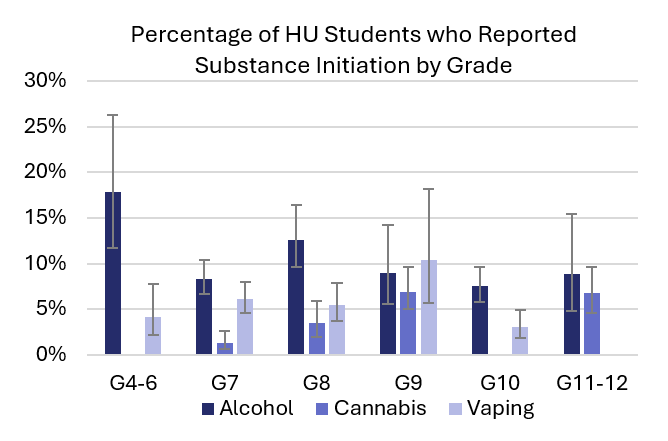 Figure 2. A graph comparing the percentage of students from the North Bay Parry Sound District Health Unit region who reported the grade they first tried alcohol (more than a few sips), cannabis, or vaping. 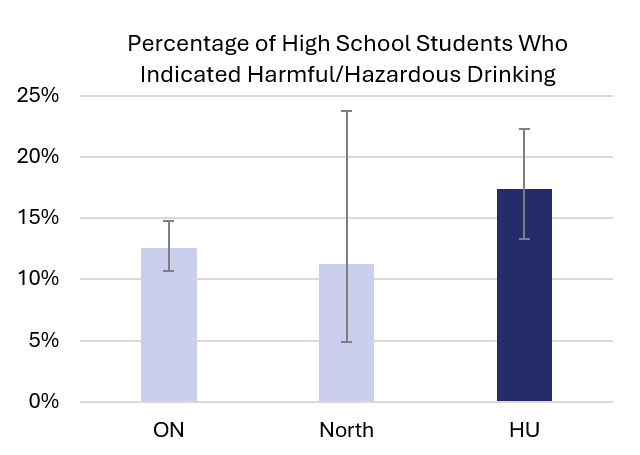 Figure 3. A graph comparing the percentage of students in the North Bay Parry Sound District Health Unit region (HU), Northern Ontario (North), and all of Ontario (ON) who scored eight or higher on the AUDIT scale that indicates harmful/hazardous drinking. 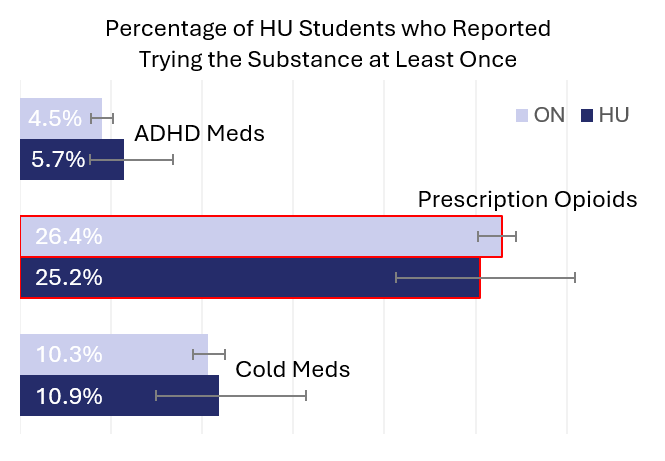 Figure 4. A graph comparing the percentage of students in the North Bay Parry Sound District Health Unit (HU) and Ontario (ON) who reported trying ADHD medication (non-medically), prescription opioids (non-medically) without a personal prescription, and cold/cough medication to get high at least once in their lifetime. Figure 4. A graph comparing the percentage of students in the North Bay Parry Sound District Health Unit (HU) and Ontario (ON) who reported trying ADHD medication (non-medically), prescription opioids (non-medically) without a personal prescription, and cold/cough medication to get high at least once in their lifetime.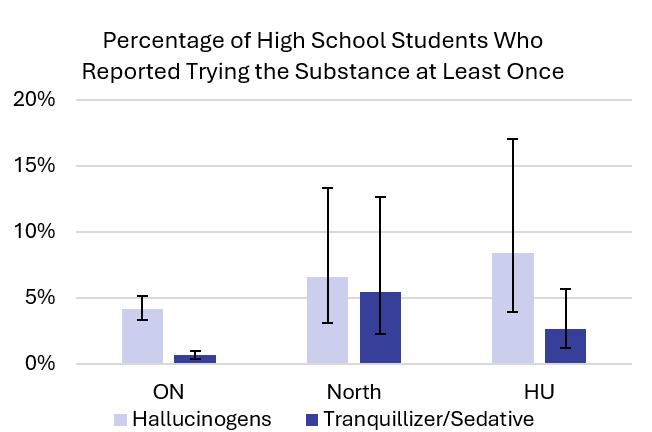
Figure 5. A graph comparing the percentage of high school students in the North Bay Parry Sound District Health Unit region (HU), Northern Ontario (North), and all of Ontario (ON) who reported trying hallucinogens (magic mushrooms) and tranquillizers/sedatives (non-medically) at least once in their lifetime.
|



